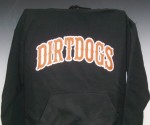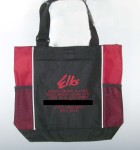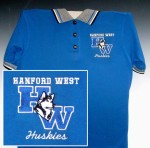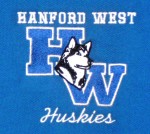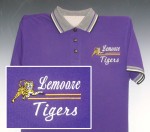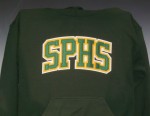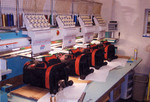Embroidery
Morrison's offers in-house embroidery services so you can be assured that your project will receive personal attention from our dedicated staff. Your embroidered logo will ensure your company gets noticed when it ís applied to styles ranging from traditional business, new corporate casual looks, or relaxed cotton performance polos. Hats are always popular here in the valley and Flex Fit hats are the hat of choice.
Morrison's Silkscreen offers a wide-selection of high-quality custom apparel solutions to ensure you can find exactly what you need for any marketing strategy, event, or organization. If you are looking for a classy, upscale look, embroidery is just what you want to enhance your image and brand. Embroidery is the most popular of all the apparel embellishment techniques. It creates a highly professional impression of your companyís logo and creates a sophisticated look. Not only that, embroidery is the most durable option available and will not wear off.
About Embroidery
About Embroidery:
Embroidery is a type of garment decoration that involves directly sewing thread onto a material. It is generally more expensive than screen printing and is considered to generate more professional results. The following paragraphs detail the embroidery process from the creation of an embroidery design through the actual embroidering of a garment. (from Wikipedia)
These are the basic steps for creating embroidery with a computerized embroidery machine.
Purchase or create a digitized embroidery design file
Edit the design and/or combine with other designs (optional)
Load the final design file into the embroidery machine
Stabilize the fabric and place it in the machine
Start and monitor the embroidery machine
Stabilizing the fabric
To prevent wrinkles and other problems, the fabric must be stabilized. The method of stabilizing depends to a large degree on the type of machine, the fabric type, and the design density. For example, knits and large designs typically require firm stabilization. There are many methods for stabilizing fabric, but most often one or more additional pieces of material called "stabilizers" or "interfacing" are added beneath and/or on top of the fabric. Many types of stabilizers exist, including cut-away, tear-away, vinyl, nylon, water-soluble, heat-n-gone, adhesive, open mesh, and combinations of these.
For smaller embroidered items, the item to be embroidered is hooped, and the hoop is attached to the machine. There is a mechanism on the machine (usually called an arm) that then moves the hoop under the needle.
For large commercially embroidered items, a bolt of fabric can be worked by a long row of embroidery "heads", producing a continuous pattern of embroidery. Each embroidery head is a sewing machine with multiple needles for different colors, and is usually capable of producing many special fabric effects including satin-stitch embroidery, chain-stitch embroidery, sequins, appliquÈ, cutwork, and other effects.
Embroidering the design
Finally, the embroidery machine is started and monitored. For most designs, there is more than one color, and the potential for additional processing for appliques, foam, or other special effects. In most designs there are multi colors of thread which our kmachines automaticly change. Depending on the quality and size of the design, stitching out a design file can require a few minutes or several hours. Sewing time is based upon the number of stitches in the design .

